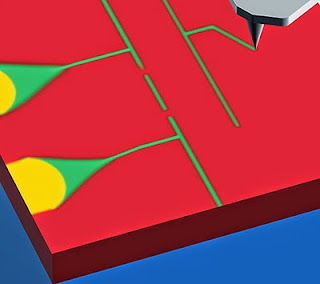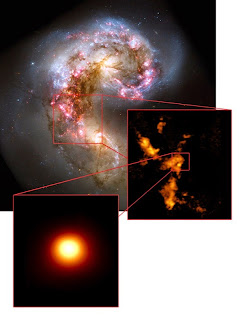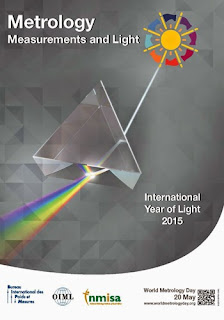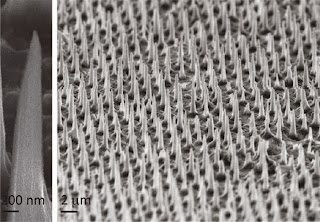 |
| Image Source: Technology Review and Physics arXiv |
Topics: Artificial Intelligence, Biology, Biomimetics, Computer Science, Humor, Quantum Computers, Quantum Mechanics
This reminded me of the Old Star Trek episode "The Devil in the Dark." It was unique in that it posited the Horta wasn't carbon-based (as we are), but silicon-based life, and a mother. Talk about "seek out new life." The write up and the paper are intriguing in that it does speculate something we altogether have never encountered, and if we did - or, in this case, create it, what then? What would we call it; what would it call us (mom/dad, or irrelevant/obsolete?), and how would we deal with our uncomfortable insignificance as a species in current 21st Century geopolitics? It's Wednesday, and I probably shouldn't think too deeply on such things. I just hope I haven't broken the three rules of Gremlins, and inadvertently fed the trolls...
TECHNOLOGY REVIEW: Computer scientists have long known that evolution is an algorithmic process that has little to do with the nature of the beasts it creates. Instead, evolution is set of simple steps that, when repeated many times, can solve problems of immense complexity; the problem of creating the human brain, for example, or of building an eye.
And, of course, the problem of creating life. Put an evolutionary algorithm to work in a virtual environment and it doesn’t take long to create life-like organisms in silico that live and reproduce entirely within a virtual computer-based environment.
This kind of life is not carbon-based or even silicon-based. It is a phenomenon of pure information. But if the nature of information allows the process of evolution to be simulated on an ordinary computer, then why not also on a quantum computer? The resulting life would exist in virtual quantum environment governed by the bizarre laws of quantum mechanics. As such, it would be utterly unlike anything that biologists have ever encountered or imagined.
But what form might quantum life take? Today we get an insight into this question thanks to the work of Unai Alvarez-Rodriguez and a few pals at the University of the Basque Country in Spain. They have simulated the way life evolves in a quantum environment and use this to propose how it could be done in a real quantum environment for the first time. “We have developed a quantum information model for mimicking the behavior of biological systems inspired by the laws of natural selection,” they say.
Physics arXiv: Artificial Life in Quantum Technologies
U. Alvarez-Rodriguez, M. Sanz, L. Lamata, E. Solano
Related Link
Science Alert:
An Electronic Memory Cell Has Been Created That Mimics the Human Brain
Fiona MacDonald















